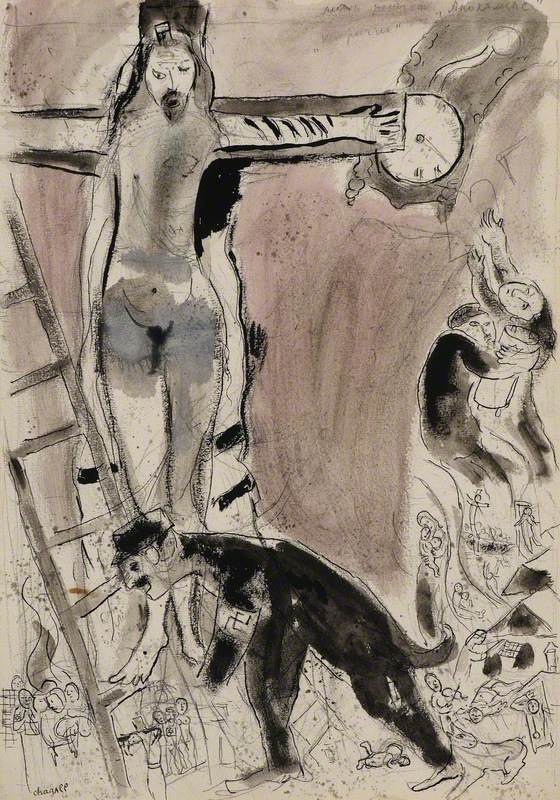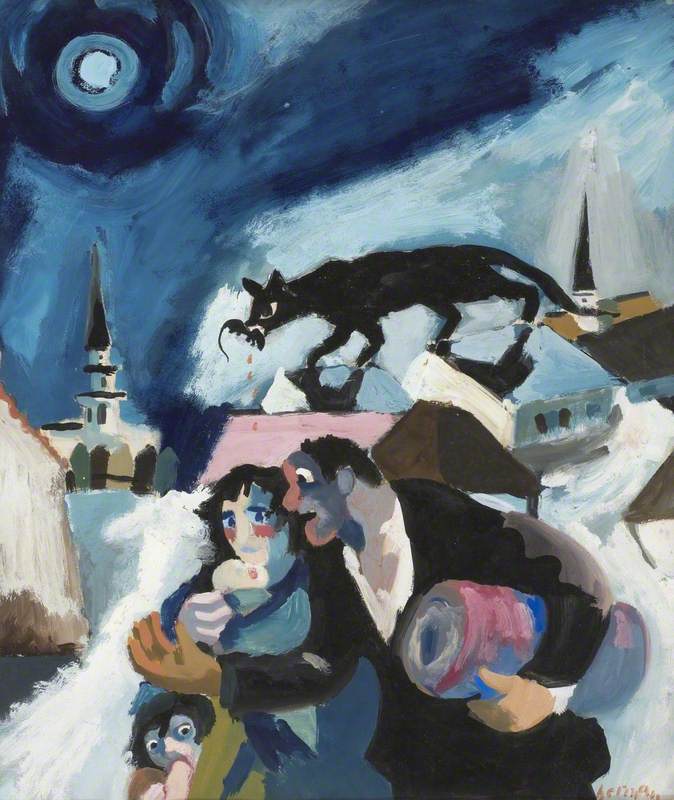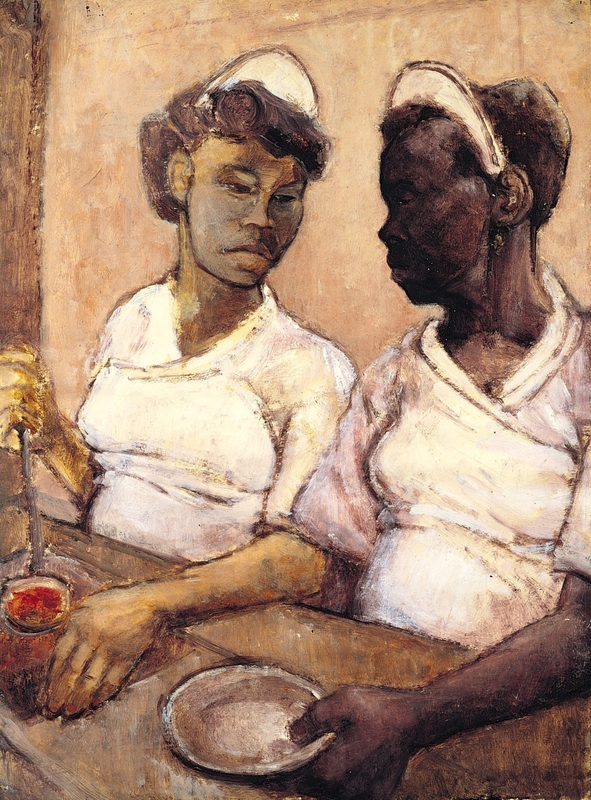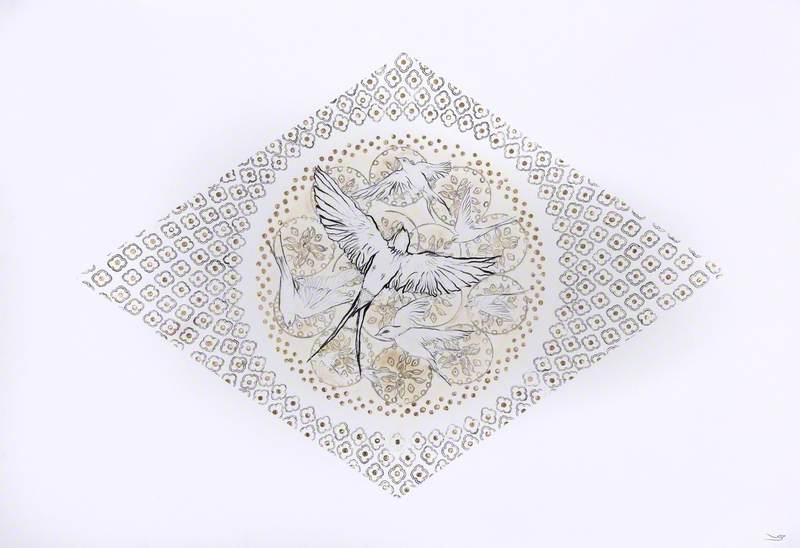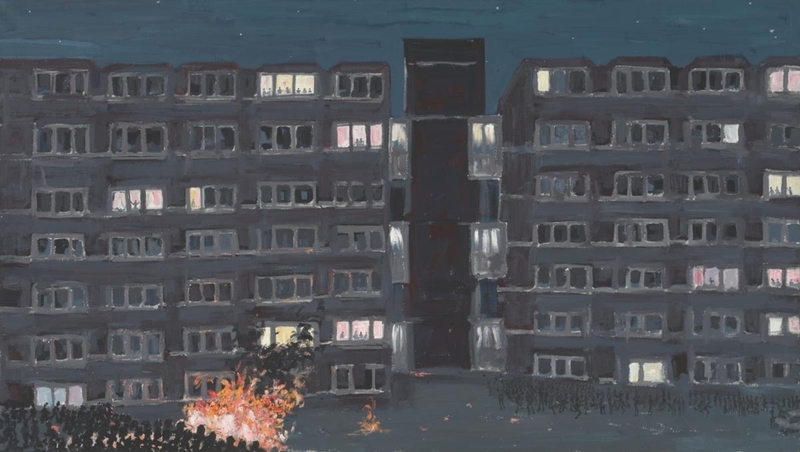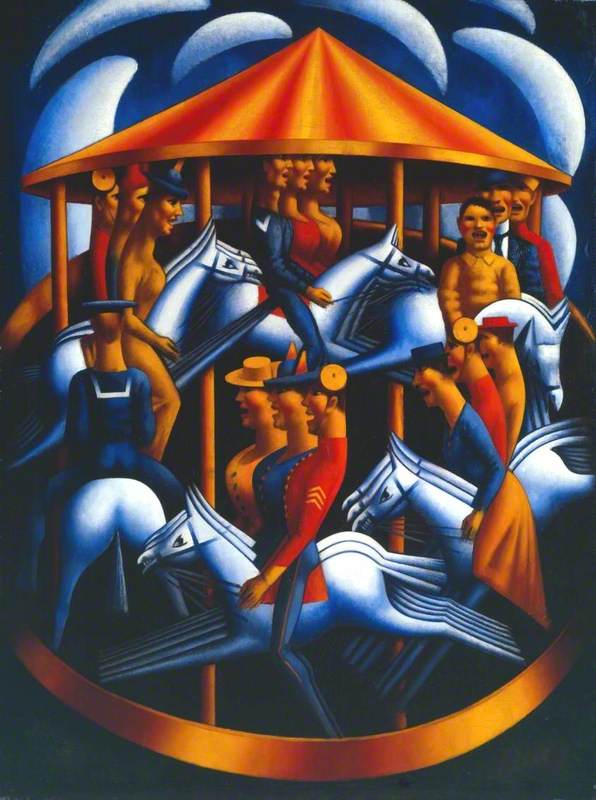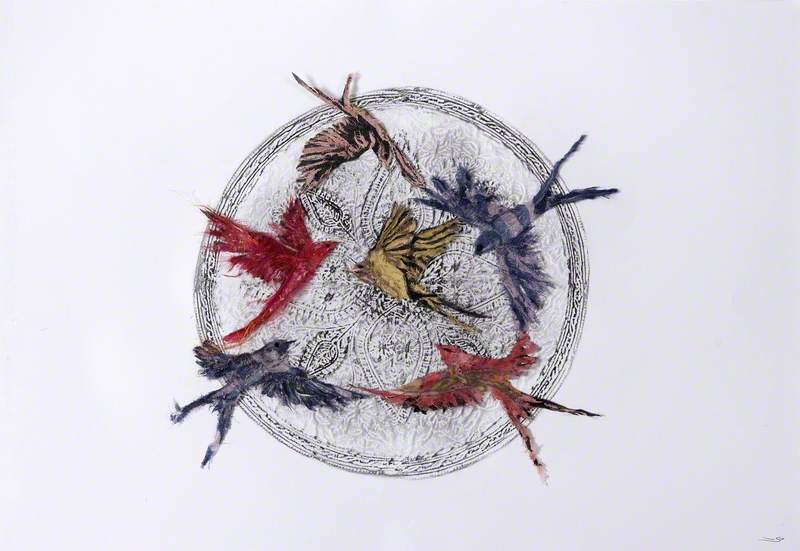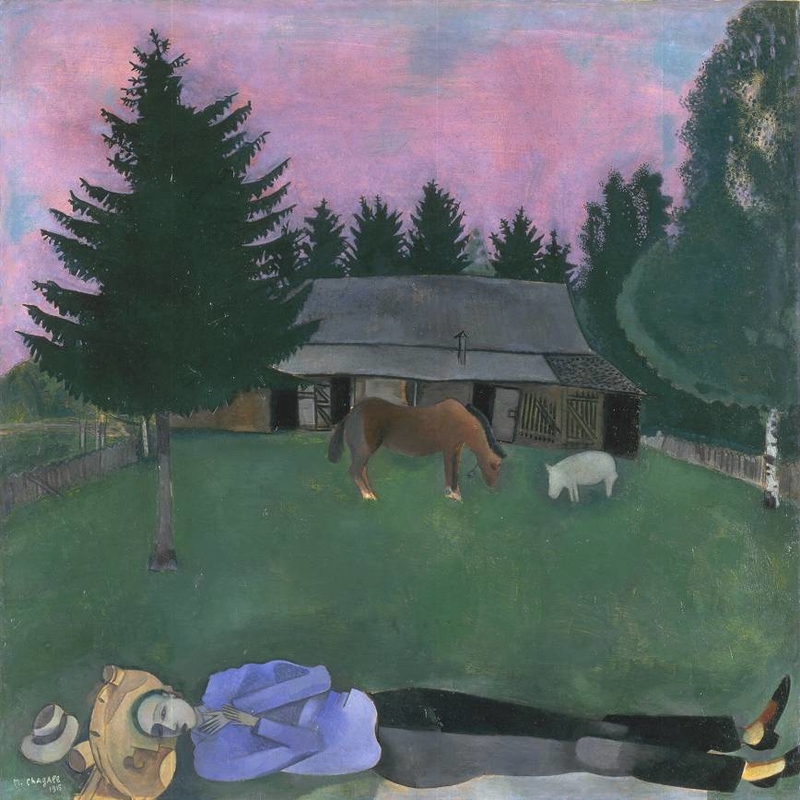Ben Uri was founded in 1915 to provide support for Jewish immigrant artists working outside the traditional mainstream and named after Bezalel Ben Uri, the biblical creator of the tabernacle. The collection is principally by late nineteenth-, twentieth- and twenty-first-century artists of Jewish descent. Since 2002 however the remit has expanded to include the wider immigrant contribution to British visual culture since 1900, irrespective of national, ethnic, or religious origins.
Art Unlocked is an online talk series by Art UK in collaboration with Bloomberg Philanthropies. This Curation is based on a talk by Sarah MacDougall, Director of Ben Uri Gallery and Museum, on 13th October 2021. You can find a recording at: https://youtu.be/EO6LNLFTCmU
-
Rabbi and Rabbitzin 1914
Mark Gertler’s experimental drawing, executed on the eve of the First World War, captures the tension between the traditional way of life depicted and the incipient warfare which threatens to overwhelm it. The concentrated, almost claustrophobic domestic interior typifies Jewish East End life of the period. The focus of the work is the relationship between the man and wife – without the title, we would not know they are Rabbi and Rebbetzin – yoked together and anchored to their spartan surroundings. Their huge eyes increase their emotive appeal, while their enlarged hands, indicate suffering and a life that has known hardship, also evoking both Gertler’s own background and the wider history of the Jewish diaspora.
Mark Gertler (1891–1939)
Watercolour & pencil on paper
H 48.8 x W 37.6 cm
Ben Uri Collection
-
Apocalypse en Lilas, Capriccio 1945
Executed when Chagall was exiled in New York following the Nazi occupation of France, this work was made in direct response to seeing the horrors of the concentration camps revealed through newspapers and Pathé newsreels. Combining symbolism with realism, it shows the figure of Christ wearing phylacteries and a tallit identifying him as a Jew. It also combines male and female attributes in a hermaphrodite figure that symbolises both the male and female victims of the Holocaust; a bestial Nazi crouches at the foot of the cross. The clock is missing its minute and hour hands, casting this moment in history as the end of time – the apocalypse. Below, a series of horrific scenes reference Jewish suffering during the Holocaust.
Marc Chagall (1887–1985)
Gouache, pencil, Indian wash & ink on paper
H 51 x W 35.5 cm
Ben Uri Collection
-
Refugees c.1941
This rare, important early work was thought lost for over 60 years since Herman destroyed the majority of work from this period in 1948, considering it too influenced by Chagall. Blue, the dominant colour of his years in exile in Glasgow (1940–1943), nostalgically evokes his lost native city of Warsaw, its moonlit skyline punctuated by rooftops and gleaming white spires. The painting draws strongly on Herman’s eastern European Jewish heritage and themes, but the refugees also represent the wider displacement of peoples uprooted and forced into exile by the upheavals of the Second World War. The family’s unknown fate is symbolised by the cat with a mouse dangling from its jaw.
Josef Herman (1911–2000)
Gouache on paper
H 47 x W 39.5 cm
Ben Uri Collection
-
West Indian Waitresses c.1955
‘West Indian, Irish, Cypriot and Pakistani immigrants, English whom the Welfare State had passed by, these were the people amongst whom I lived and made some of my best friends,’ Eva Frankfurther observed. She made particular friends among the Windrush generation, portraying her co-workers at Lyons' Corner House, Piccadilly in their distinctive uniforms, with empathy and dignity. Employing loose brushwork and dry paint in a restricted palette, sparingly applied, her carefully arranged composition balances the strong verticals of their bodies and solid horizontals of their beam-like arms with a series of strong diagonals. Their stilled gestures suggest a rare quiet moment among the busy reality of restaurant life.
Eva Frankfurther (1930–1959)
Oil on paper
H 76 x W 55 cm
Ben Uri Collection
-
The Hand Made Map of the World 2013
Tam Joseph was born in Dominica and migrated to England in 1955, drawing from an early age. His work explores the many and multi-faceted inspirations, aspirations, and contradictions that shape contemporary realities. The Hand Made Map of the World combines his interest in the natural world and its sometimes seemingly arbitrary territorial divisions, drawing on his childhood recollection of the map of the British Empire, and his later awareness of the divisive legacy of colonialism. Joseph playfully reorders conventional geographies, blurring boundaries and suggesting new and unexpected possibilities for the world political map. ‘Painting is about looking and interpreting and interpreting and looking again,' he has observed.
Tam Joseph (b.1947)
Acrylic on board
H 70.7 x W 121.2 cm
Ben Uri Collection
-
Revolution Street 2 2019
The swallow, a universal symbol of migration, is a frequent motif in the work of British-Iranian visual artist Zory Shahrokhi, whose work is strongly influenced by Persian poetry, fabric and rug design. She is primarily interested in universal issues around the human condition, as well as perceptions around displacement, exploitation, and gender oppression. This work is one of a pair that comprise her commissioned response to Ben Uri’s exhibition 'Liberators: 12 Extraordinary Women Artists from the Ben Uri Collection' (2018). It also relates to the piece Swallows from her installation 'Flying', comprising more than 50 birds made from fragments of Persian cloth sent to her by her family and friends in Iran since she left her native country.
Zory Shahrokhi (active since c.2003)
Pen, ink & gold pen
H 49 x W 69 cm
Ben Uri Collection

